Mitsubishi Motors today presented the 6th generation of its Triton pick-up truck in Thailand, where the model has had its global production base since 2005. The model has accounted for the largest proportion of the 5 million vehicles exported by Mitsubishi Motors from Thailand since 1988.
“As a pick-up truck that fits for a new era, we have developed the all-new Triton with even more Mitsubishi Motors-ness,” said Takao Kato, President & CEO of Mitsubishi Motors. “With production ultimately expected to reach 200,000 vehicles in over 100 countries, the all-new Triton is an extremely important model that will provide foundational support for Mitsubishi Motors, as well as the first global strategic vehicle to be rolled out at the start of our growth phase.”
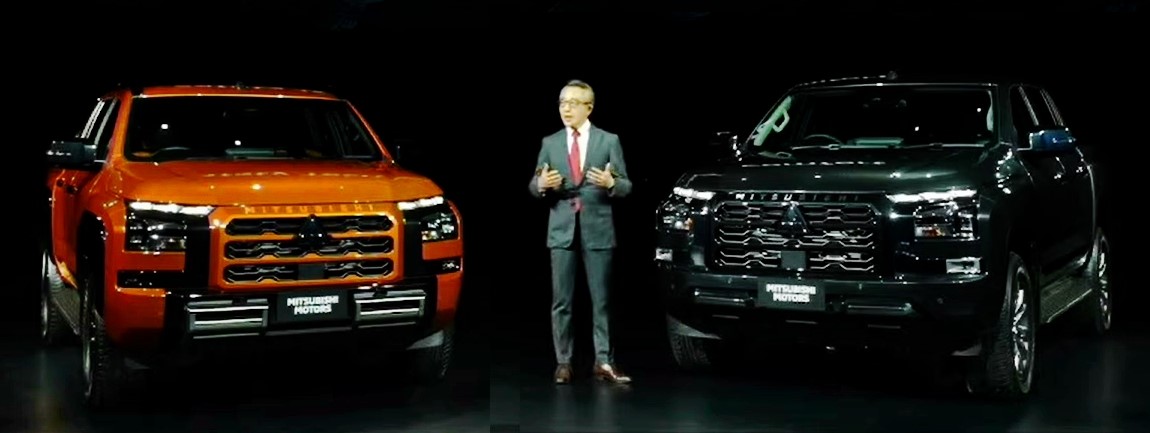
![1978 Mitsubishi Forte [Triton]](https://www.motaauto.com/wp-content/uploads/2023/07/1978-Mitsubishi-Forte-Triton.jpg)

The latest generation of the 1-ton pickup truck has been completely re-engineered with a newly developed ladder chassis frame and newly designed double wishbone front suspension with leafspring rear suspension.
The powertrains are also new, with a new 4-cylinder turbodiesel engine with improved environmental performance as well as higher output.

First full change in 9 years
“This is the first full model change in about 9 years,” said Chief Product Specialist, Yoshiki Masuda. “The engine, suspension, interior and exterior have all been renewed, and driving performance, comfort, safety, etc. have greatly improved.”
“In order to meet the demands of a working car, we have interviewed various customers about their usage environments and needs, and conducted repeated development tests. We have created a car that satisfies all customers around the world, from leisure use to commercial use,” he explained.
As before, the new Triton has three bodystyles – double cab (the most popular), club cab (with extra cargo space behind the front seats) and single cab (mainly for commercial use).

‘Beast Mode’ design concept
The frontal design continues to use the Dynamic Shield concept which gives a ‘’Beast Mode’ look of boldness and power. The 3-dimensional front grille and fenders are flanked by daytime running lights formed with 3 L-shaped LED lights that resemble the sharp gaze of a hawk. These are complemented by the 3-dimensional tri-light headlights below them.

The slightly larger horizontally-themed body sides are composed of large, solid surfaces that emphasize the robust doors. These contrast with the sharply overhanging fender panels to tighten them and make them appear wider, emphasizing stability and toughness.

While ensuring the cargo bed is of an ample size, functional design has been incorporated in all aspects to provided increased utility. The bigger door handles are said to be more durable and easier to grip, while the wider side-steps have improved water drainage.

The cargo bed height has been lowered by 45 mm to 820 mm, and the upper surface area of the bumper corner has been enlarged and reinforced with a frame to be used as a foot space, thereby improving practicality.
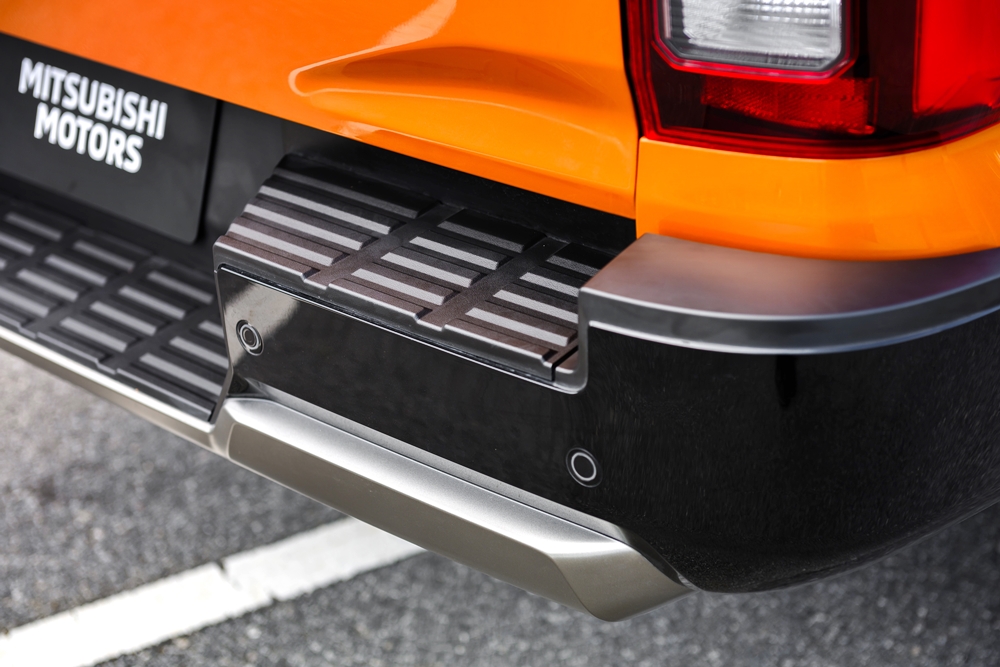

Tougher chassis
The newly developed ladder chassis frame has a 65% greater cross-sectional area than the previous model. This has raised bending rigidity by 40% while torsional rigidity is 60% greater. However, weight increase has been minimized by increasing the ratio of high-tensile steel used, some of which new 1,180 MPa high-tensile material.

The newly developed suspension retains a double wishbone structure for the front suspension, and prioritizes reliability and durability.

The upper suspension mounting arm has been moved higher to increase the stroke by 20 mm, providing improved road-holding and ride comfort. The rear suspension provides greater ride comfort while retaining its strength and uses a lighter leafspring system together with thicker shock absorbers.
While the body size is slightly enlarged, the increase in turning radius has been minimized. The designers have also shaped the bonnet so the driver can see its line while manoeuvring.
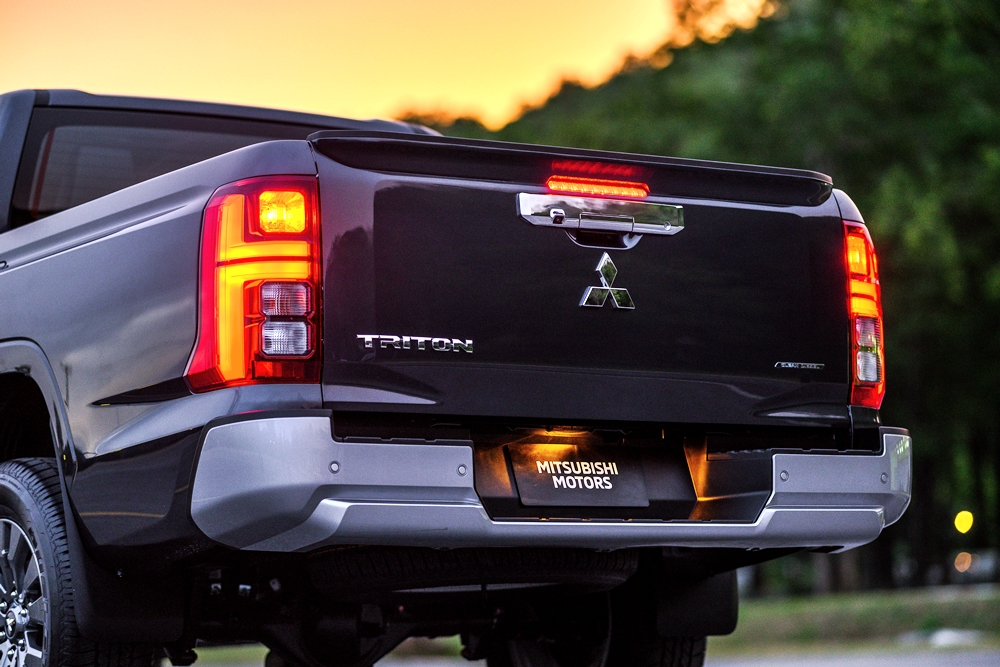
For versions with the high-output engines, an electric power steering system is adopted. This gives enables better control by providing more assistance in the low-speed range. There is more feedback in the high-speed range to give the driver more assurance while kickback from the road surface is less.
Newly developed turbodiesel engine
A highlight of the new Triton is the newly developed 4N16 turbodiesel engine. This 4-cylinder powerplant will be available with 3 output levels.
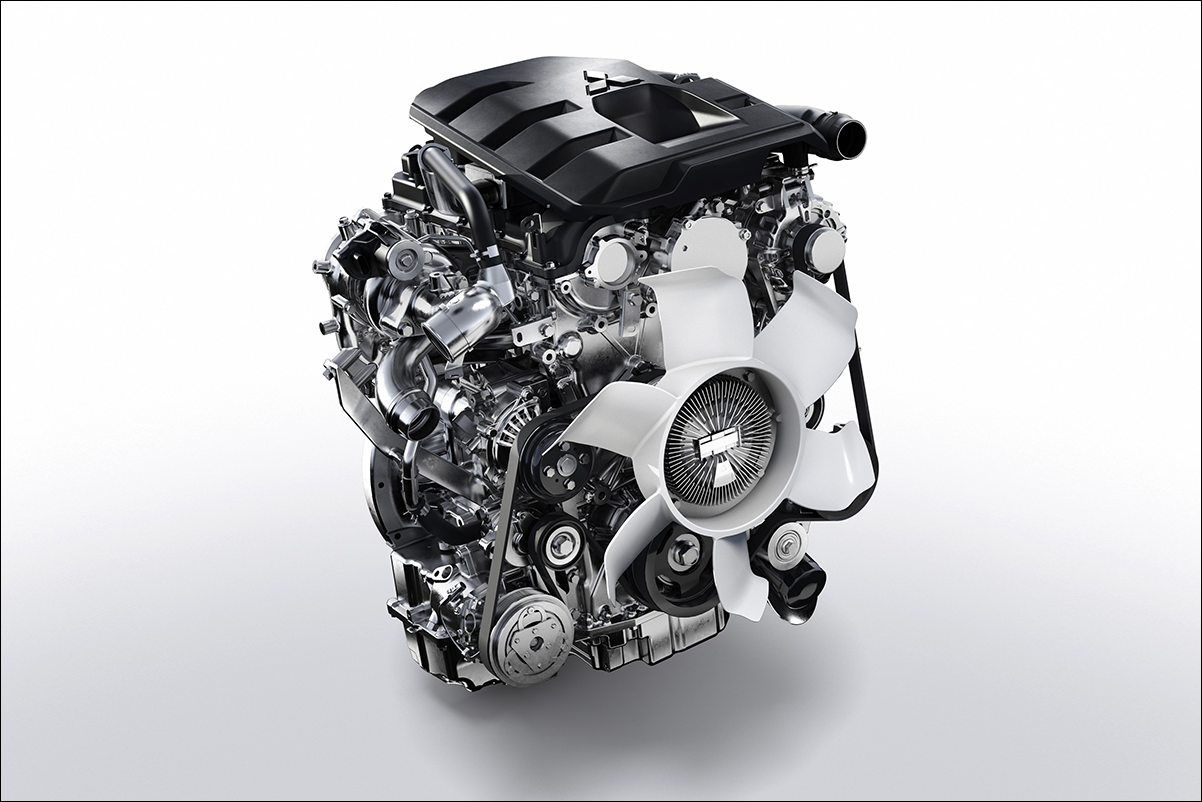
The high-output version is equipped with a new turbocharger and new combustion system, providing a maximum output of 150 kW (204 ps) and maximum torque of 470 Nm which is available from approximately 1500 rpm.
There are two versions of the standard specification – one with an engine that has a maximum output of 135 kW (184 ps)/430 Nm, and the other with 110 kW (150 ps)/330 Nm. Both use a variable geometry turbocharger to optimise air-fuel delivery.

For easier maintenance work, the location of the drain bolt has been changed to enable engine oil to be replaced without having to remove and replace the under-cover. For 4WD/2WD High Riders, the service hole size has been increased to enable garage jacks to be used without an attachment.
Drivetrains will have either a 6-speed automatic or manual transmission. The latter now has shift-by-wire operation that reduces vibration directly transmitted from the engine for improved comfort.

Gear oil replacement is unnecessary in the 6-speed manual transmission version among other improvements. This is in line with efforts to reduce maintenance needs.

4×4 drivetrains developed with Dakar experience
The Triton’s 4WD system has been developed and improved with Mitsubishi Motor’s long experience in tough off-road events. These include many Dakar Rallies and more recently, the Asia Cross Country-Rally.
Depending on the version, the proven Super Select 4WD-II and Easy Select 4WD systems, and Super Select 4WD-II (with a centre torque sensing Limited Slip Differential) deliver power to all four wheels. The driver can easily shift to 4×4 mode while the vehicle is moving by using a rotary dial selector.

For vehicles which has the Super Select 4WD-II system, there is also Active Yaw Control (AYC). This is more for highway driving and improves cornering performance by applying light braking to the inside front wheel when cornering.
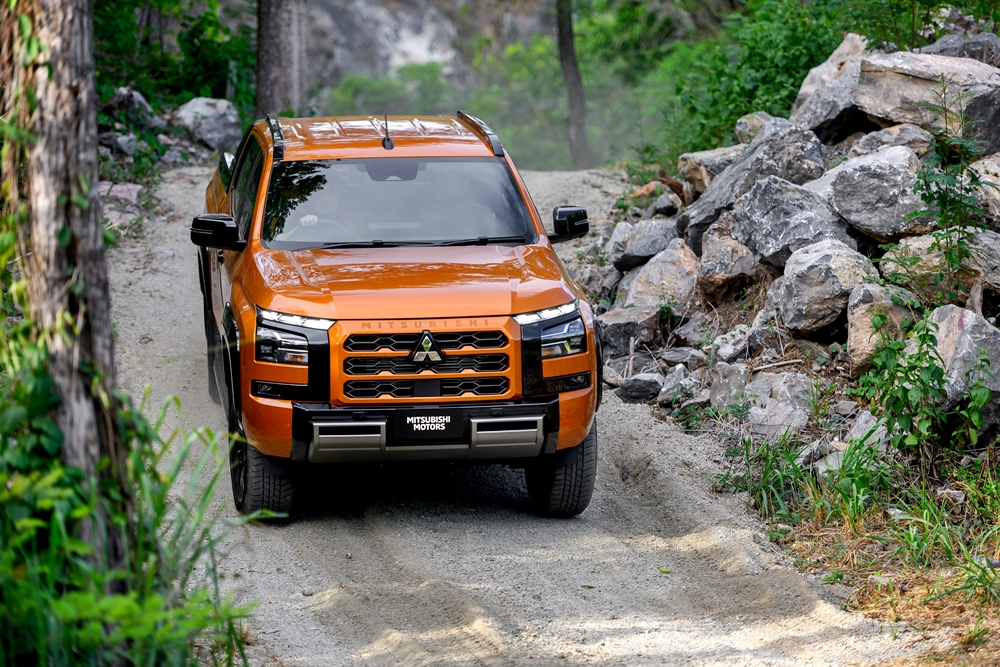
Both the 2×4 and 4×4 models are equipped with active LSD (brake control type). By applying the brake to a spinning wheel and distributing the driving torque to wheels gripping the road surface, grip and stability can be improved on slippery surfaces.
Other active driver-assist systems include Active Stability & Traction Control, Hill Descent Control and Hill Start Assist. Adaptive Cruise Control is now available, along with other active systems including autonomous braking when necessary.
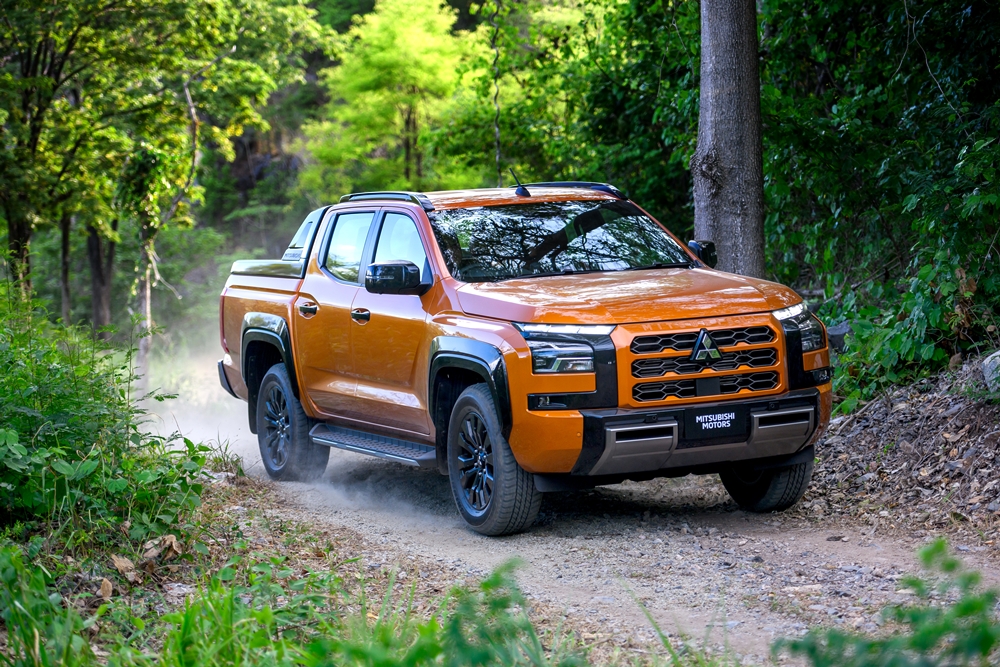
Inside the new Triton
In the cabin of the new Triton, the instrument panel is designed with the Horizontal Axis concept. This uses horizontally-themed and strong shapes to allow drivers to easily see changes in the posture of the vehicle when driving.
In terms of design, the interior uses many geometric shapes and metallic elements to create a high-contrast, modern space.
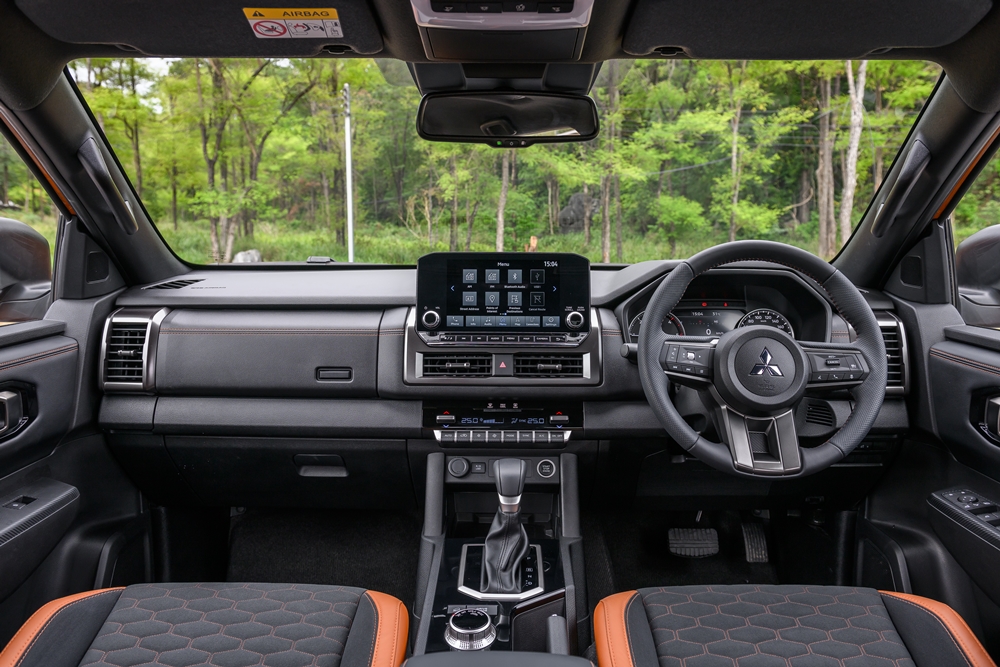
Drawing on advice from professionals like 3-time Dakar Rally winner, Hiroshi Masuoka, soft pads have been incorporated in the main areas that protect passengers. Particular attention has been paid to visibility for the monitor, meters, and switches that make use of contrast.
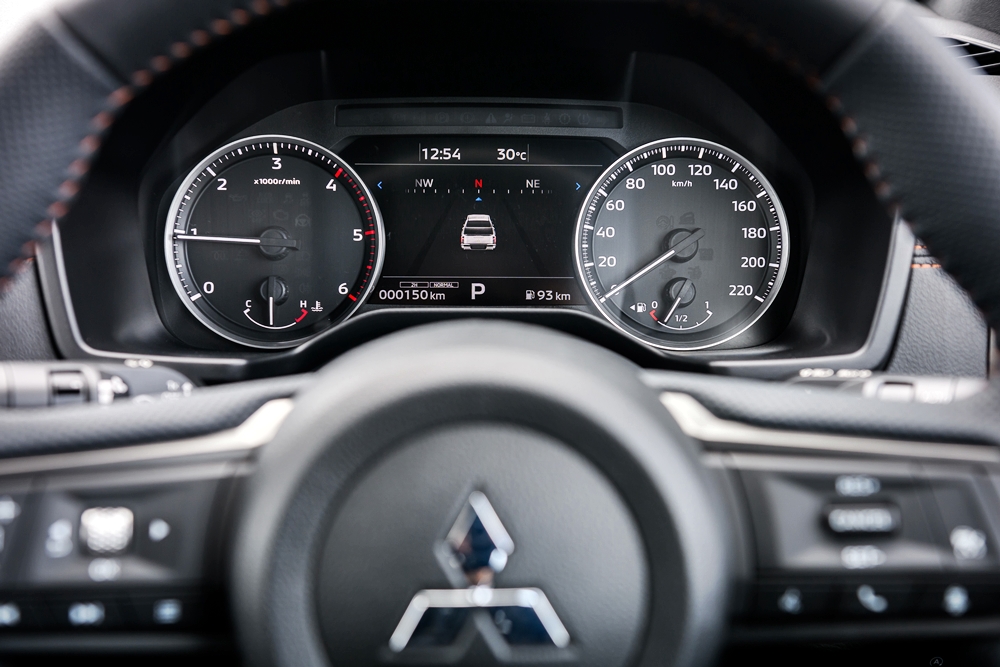
The selectors, dials, and switches all have the optimum level of sensitivity to allow them to be operated while wearing gloves. The steering wheel, grips, and door handles have been designed based on an approach called Mitsubishi Touch, with a focus on grip comfort and sturdiness.

The front seats provide firm lower back support while the shoulder areas provide ease of movement with an open shape, which helps to reduce driver fatigue. The hip point has also been moved 20 mm up compared to the previous model and an upright posture has been adopted to improve visibility from inside the vehicle.
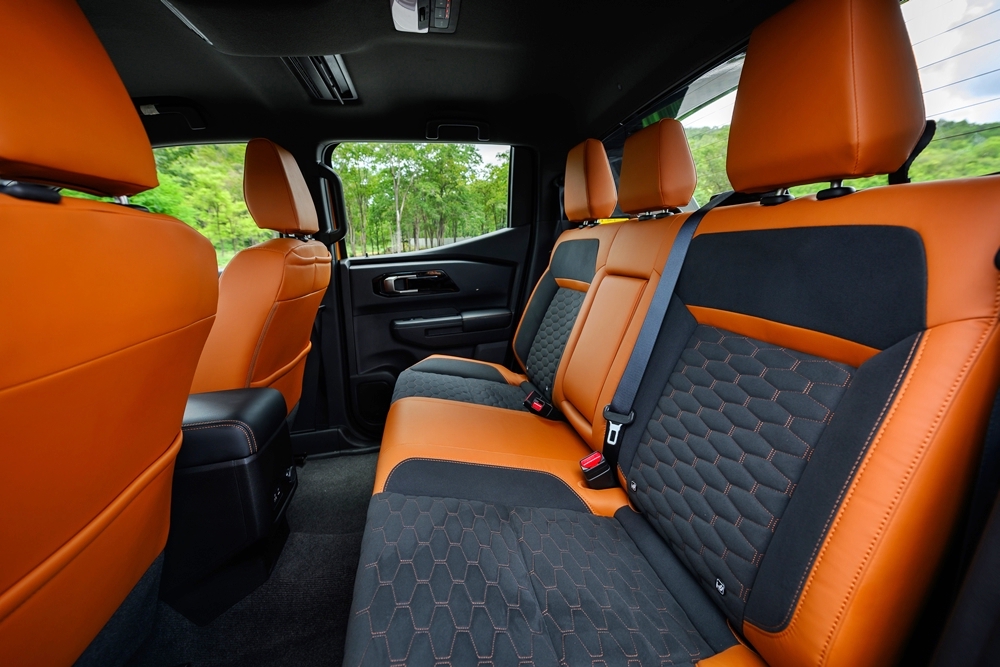
In addition, ingress and egress have been made easier by designing the A-pillar to be more vertical to widen the door openings and widening the side steps while making them a shape that reduces the risk of slipping.

It will be a while before the new Triton arrives in Malaysia. In the meantime, if you want to register your interest in the new model, let an authorised Mitsubishi Motors dealer know. The locations of dealerships in Malaysia can be found as www.mitsubishi-motors.com.my.
Team Mitsubishi Ralliart to use all-new Triton for Asia Cross Country Rally in August
